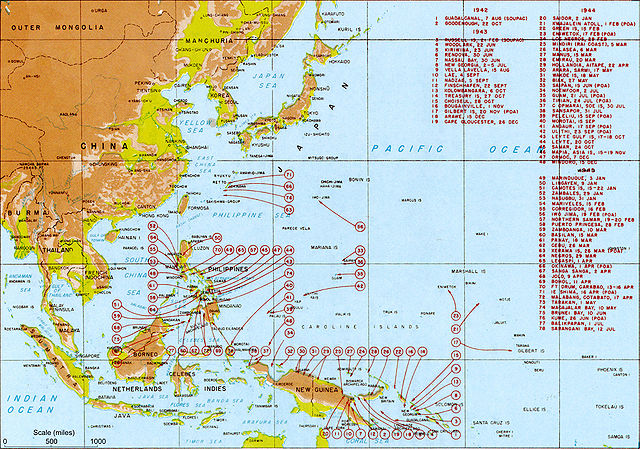Japanese Instrument of Surrender
The Japanese Instrument of Surrender was the written agreement that formalized the surrender of the Empire of Japan, marking the end of hostilities in World War II. It was signed by representatives from the Empire of Japan and from the Allied nations: the United States of America, the Republic of China, the United Kingdom of Great Britain and Northern Ireland, the Union of Soviet Socialist Republics, the Commonwealth of Australia, the Dominion of Canada, the Provisional Government of the French Republic, the Kingdom of the Netherlands, and the Dominion of New Zealand. The signing took place on the deck of USS Missouri in Tokyo Bay on 2 September 1945.
Representatives of the Empire of Japan stand aboard USS Missouri prior to signing of the Instrument of Surrender.
Japanese Foreign Minister Mamoru Shigemitsu signing the Instrument of Surrender on behalf of the Japanese Government, formally ending World War II. Standing behind the table is General Richard K. Sutherland.
General of the Army Douglas MacArthur signing the Instrument of Surrender on behalf of the Allied Powers. Generals Wainwright and Percival, both former prisoners of the Japanese, stand behind him.
Commodore Perry's flag was flown from Annapolis, Maryland, to Tokyo for display at the surrender ceremonies which officially ended World War II.
The surrender of the Empire of Japan in World War II was announced by Emperor Hirohito on 15 August and formally signed on 2 September 1945, bringing the war's hostilities to a close. By the end of July 1945, the Imperial Japanese Navy (IJN) had become incapable of conducting major operations and an Allied invasion of Japan was imminent. Together with the United Kingdom and China, the United States called for the unconditional surrender of the Japanese armed forces in the Potsdam Declaration on 26 July 1945—the alternative being "prompt and utter destruction". While publicly stating their intent to fight on to the bitter end, Japan's leaders were privately making entreaties to the publicly neutral Soviet Union to mediate peace on terms more favorable to the Japanese. While maintaining a sufficient level of diplomatic engagement with the Japanese to give them the impression they might be willing to mediate, the Soviets were covertly preparing to attack Japanese forces in Manchuria and Korea in fulfillment of promises they had secretly made to the United States and the United Kingdom at the Tehran and Yalta Conferences.

Japanese foreign affairs minister Mamoru Shigemitsu signs the Japanese Instrument of Surrender aboard the USS Missouri as American General Richard K. Sutherland watches, 2 September 1945.
Representatives of the Empire of Japan stand aboard USS Missouri prior to signing of the Instrument of Surrender.
Allied landings in the Pacific Theatre of operations, August 1942 to August 1945
The rebuilt battlecruiser Haruna sank at her moorings in the naval base of Kure on 24 July during a series of bombings.






